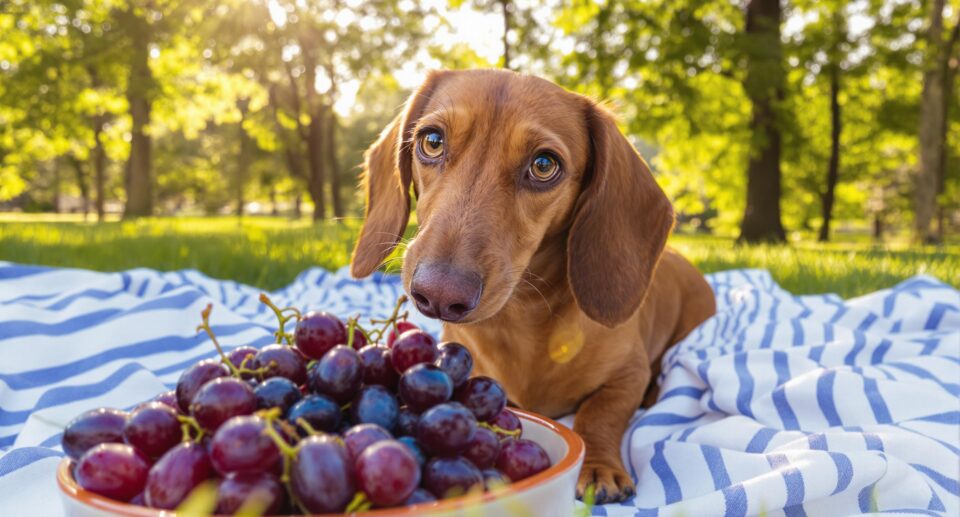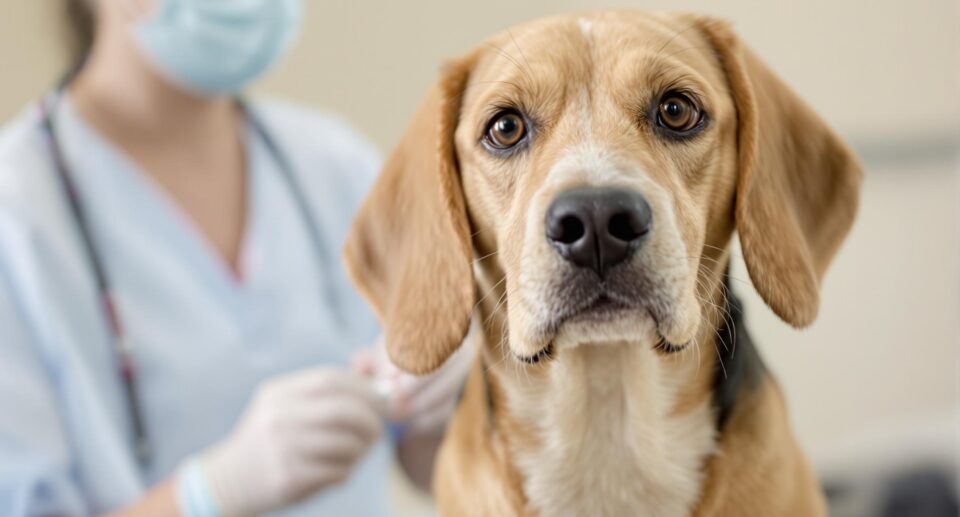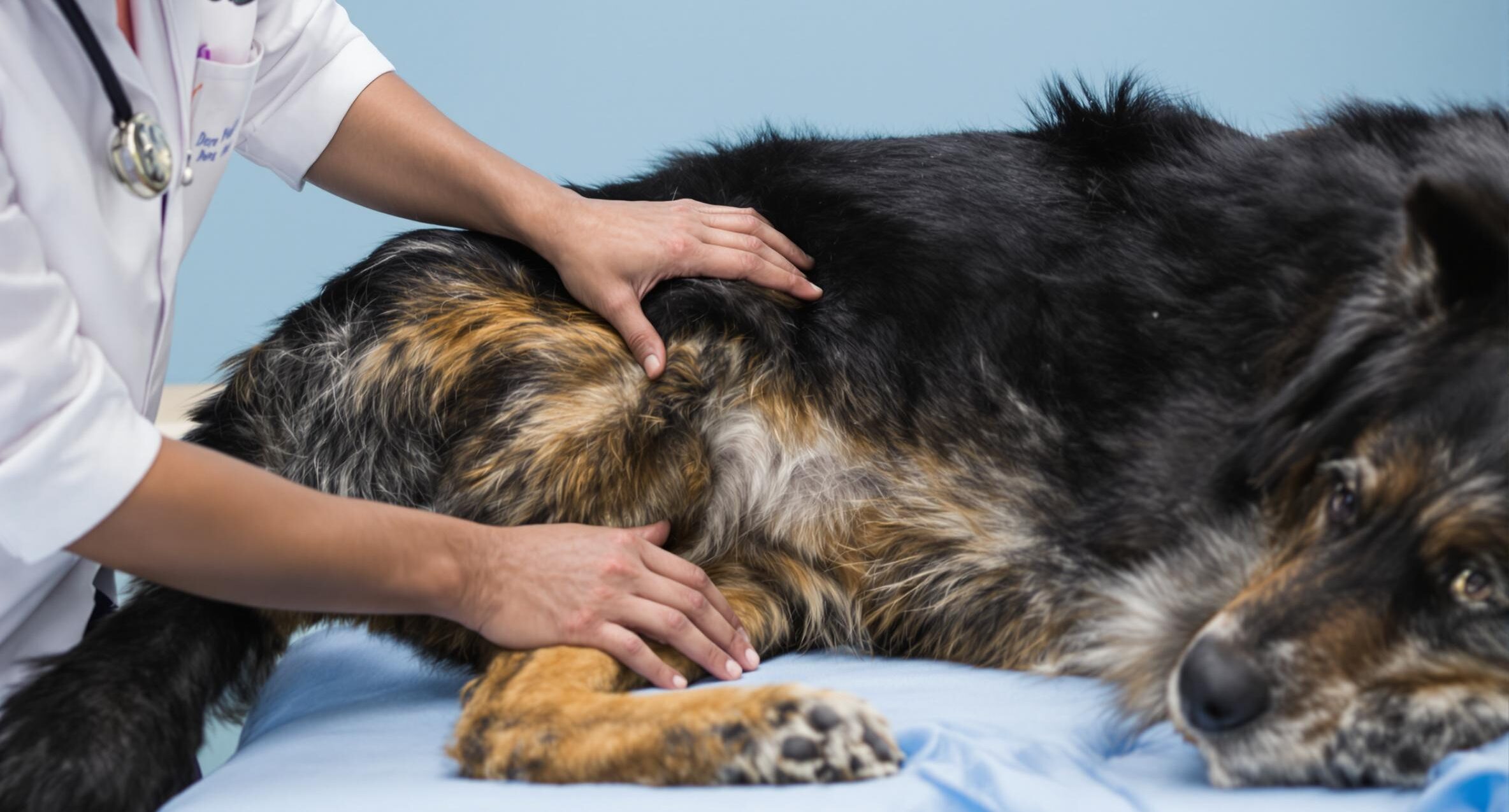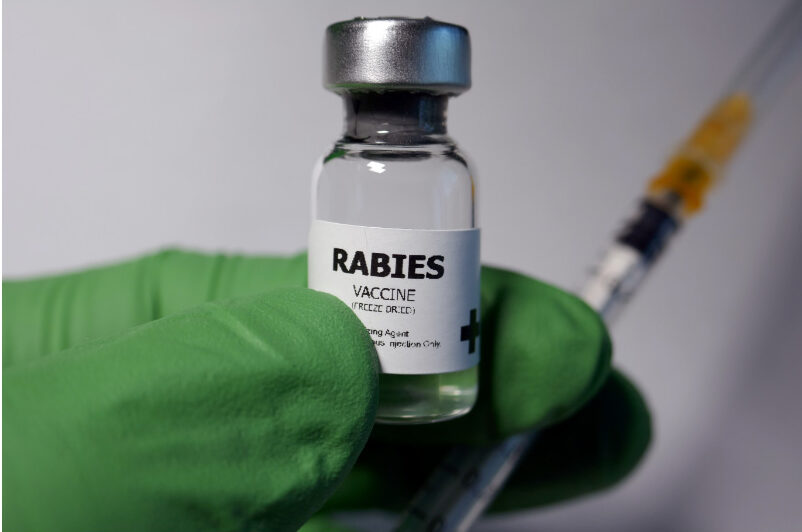Can Dogs Eat Grapes? Exploring the Facts

Key takeaways:
- Grapes and raisins are unsafe for dogs and can lead to serious kidney issues, even in small amounts.
- There’s no “safe” number of grapes—some dogs get sick from just one, while others may not react, making prevention key.
- If your dog does eat a grape, call your vet right away. Acting fast can help reduce risks before symptoms appear.
Not all pet hazards are obvious, and grapes are a perfect example. They may seem like a healthy snack, but for dogs, they’re anything but. Even a single grape can cause serious problems, and there’s no reliable way to predict how each dog will react. That’s why grapes and raisins are considered off-limits for dogs entirely.
At PetHealthMD, we understand how important it is to know what your dog can and can’t safely eat. This guide walks you through the dangers of grape toxicity, how to respond if your dog is exposed, and safer treat options you can feel good about.
Why are grapes toxic to dogs?
Grapes and raisins may seem like simple snacks, but they’ve been linked to serious health issues in dogs. Thanks to recent research, we now have a clearer idea of what might be behind the problem.
- Tartaric acid may be the cause: This naturally occurring compound in grapes and raisins is now considered a likely reason some dogs experience adverse reactions. It can affect the kidneys and cause digestive upset in certain cases.
- Reactions vary between dogs: There isn’t a known “safe” amount of grapes for dogs. Some may eat one and have no symptoms, while others may become ill from the same amount. That’s why caution is recommended regardless of breed or size.
- Other foods may also contain tartaric acid: Ingredients like cream of tartar can carry similar risks for dogs, making it a good idea to be mindful of what’s in baked goods or other recipes your pet might access.
While not every dog will react to grapes the same way, it’s best to play it safe and keep them off the menu. Avoiding exposure is the simplest way to reduce risk and prevent avoidable vet visits.
Symptoms of grape or raisin toxicity in dogs
If a dog eats grapes or raisins, symptoms can start within a few hours or take a bit longer to appear. Some dogs show only mild signs at first, while others may develop more noticeable changes over time. Keeping an eye out for the following can help you know when it’s time to call your vet.
- Loss of appetite: A dog that suddenly shows no interest in food may be reacting to something affecting their digestive system.
- Lethargy or weakness: Sluggishness, low energy, or unsteady movement could signal that your dog isn’t feeling well and needs support.
- Vomiting or diarrhea: These are some of the earliest signs that something isn’t sitting right and may show up within just a few hours of ingestion.
- Tremors or seizures: In more serious cases, muscle twitching or full-body seizures can occur, especially if kidney function is affected.
- Heavy panting or dry mouth: Breathing changes or signs of dehydration, like a dry nose or gums, may indicate that your dog is struggling to stay hydrated. Offer cool, clean water in a spill-proof dog water bowl to help your dog stay comfortable while you contact your vet.
- Light-colored gums: Pale or white gums can point to circulation or hydration issues, which are worth mentioning to your vet.
- Changes in urination: You may notice your dog urinating more often at first, followed by little or no urination later on. This shift can signal kidney involvement.
While symptoms vary, any unusual behavior after grape or raisin ingestion is worth taking seriously.
What to do if your dog eats grapes or raisins

If you think your dog has eaten grapes or raisins—even a small amount—it’s best to take action quickly. Early steps can help reduce the risk of serious illness and improve your dog’s chances of a smooth recovery.
- Call your veterinarian right away: Even if your dog seems fine, it’s important to report what happened. Your vet can help assess the situation and guide you through the next steps.
- Contact an animal poison control center: If your vet isn’t available, call a 24/7 resource for guidance. The ASPCA Animal Poison Control Center can be reached at (888) 426-4435.
- Don’t wait for symptoms to appear: Toxic effects may take hours to show, but by then, the damage may already be underway. Acting early can help prevent more serious outcomes.
- Follow your vet’s recommendations carefully: Depending on the situation, your vet might recommend bringing your dog in, inducing vomiting, or starting IV fluids and monitoring kidney function.
- Avoid home remedies unless instructed: Inducing vomiting or giving activated charcoal should only be done under professional guidance to avoid causing harm.
- Bring helpful info with you: If possible, note how many grapes or raisins your dog ate, when it happened, and its weight. This will help your vet decide the best course of action.
Timely care makes a big difference. When it comes to grape or raisin ingestion, it’s better to be cautious and check in with a professional than to wait and see what happens.
What fruits can my dog eat?
If you’re looking to add a fruity snack to your dog’s routine, some options are safe in moderation, while others should always be avoided. Knowing the difference can help you treat your dog without risking their health.
Here are fruits that are generally safe for dogs to enjoy as an occasional treat:
- Apples (no seeds): A crunchy, low-fat snack that’s full of fiber. Just remove the seeds and core before serving.
- Bananas: Soft, sweet, and easy to digest. Best given in small amounts due to their sugar content.
- Blueberries: Rich in antioxidants and easy to serve fresh or frozen as a bite-sized treat.
- Cantaloupe: Hydrating and low in calories. Be sure to remove the rind and seeds first.
- Cranberries: Safe in small amounts, but some dogs may not like the tart flavor. Avoid cranberry juice blends with added sugars.
- Mango (peeled and pitted): A tropical option dogs tend to love. Just keep portions small and skip the pit.
- Orange (peeled): A few segments are okay for most dogs, but the strong citrus taste might not appeal to all.
- Pineapple: Packed with vitamins and safe in bite-sized amounts. Make sure to remove the tough skin and core.
- Pear (no seeds): Sweet and fiber-rich, but serve in moderation. Always remove the seeds and stem.
- Raspberries and strawberries: Both are low in calories and high in fiber. Great fresh or mashed over food.
Fruits that dogs should avoid entirely include:
- Grapes and raisins: Known to cause kidney issues and are unsafe in any amount.
- Cherries: The pits, stems, and leaves contain cyanide and can be harmful if ingested.
- Lemons, limes, and grapefruit: Too acidic for dogs and may cause an upset stomach, especially in larger amounts.
- Persimmons: The seeds and skin can lead to digestive issues or blockages.
Tips for serving fruit to dogs
To make sure your dog enjoys fruit without any issues, keep these serving guidelines in mind:
- Moderation is key: Fruit should only be an occasional treat.
- Avoid added sugars and syrups: Stick to fresh, natural fruit. Canned or dried versions often contain ingredients that aren’t safe for dogs. If you’re looking for something sweet and safe, try natural fruit chews made specifically for dogs.
- Always wash fruit thoroughly: This removes pesticides, dirt, and any surface chemicals.
- Cut into bite-sized pieces: Smaller chunks help prevent choking, especially for small breeds or fast eaters.
While fruits can be a fun treat, they shouldn’t replace your dog’s regular diet. If you’re unsure about a specific food, check with your vet before sharing. It’s always better to be cautious with new additions to your dog’s routine.
Frequently asked questions (FAQs)
Many pet owners worry about what to do when their dog encounters grapes. Here are friendly, practical answers to your most common questions about keeping your furry friend safe.
Can a single grape harm my dog?
Different dogs react differently to grapes – while some might show mild signs after eating one grape, others could experience more severe effects. Small dogs (under 10 pounds) face higher risks from even a single grape, while larger dogs might tolerate small amounts better, but it’s best not to take chances.
What should I do if my dog eats grapes?
Please call your veterinarian right away—they’re there to help and can guide you through the next steps. If you notice your dog ate grapes within the last hour, your vet might recommend safe ways to make your dog comfortable while you take it to professional care.
How quickly do grape-related symptoms appear?
Most dogs show signs within 12-24 hours, starting with tummy upset or changes in energy levels. While some pups might seem fine at first, it’s important to watch for changes in drinking or bathroom habits.
Can I help my dog at home before seeing the vet?
While waiting to see your vet, keep your dog calm and comfortable. Never try home treatments or induce vomiting without veterinary guidance—your vet knows the safest approach for your specific pup.
Safeguarding your dog’s health
While it might feel harmless to share your snacks, some foods just aren’t worth the risk. Grapes and raisins fall into that category. Even one could cause trouble, especially if you don’t catch the symptoms early. Keeping these foods out of reach and knowing what to do if exposure happens can help you protect your dog’s health.
PetHealthMD offers clear, practical guidance on what’s safe to feed your pet—and what to avoid. For more on food safety, supplements, and dog-approved treats, check out our latest resources or browse trusted products from 1800PetMeds and PetCareRx.





